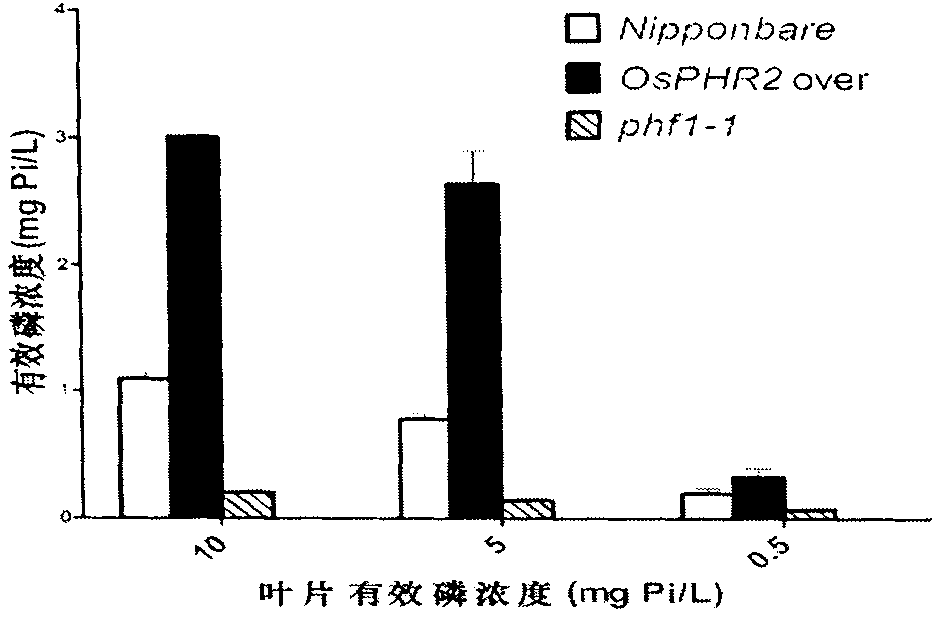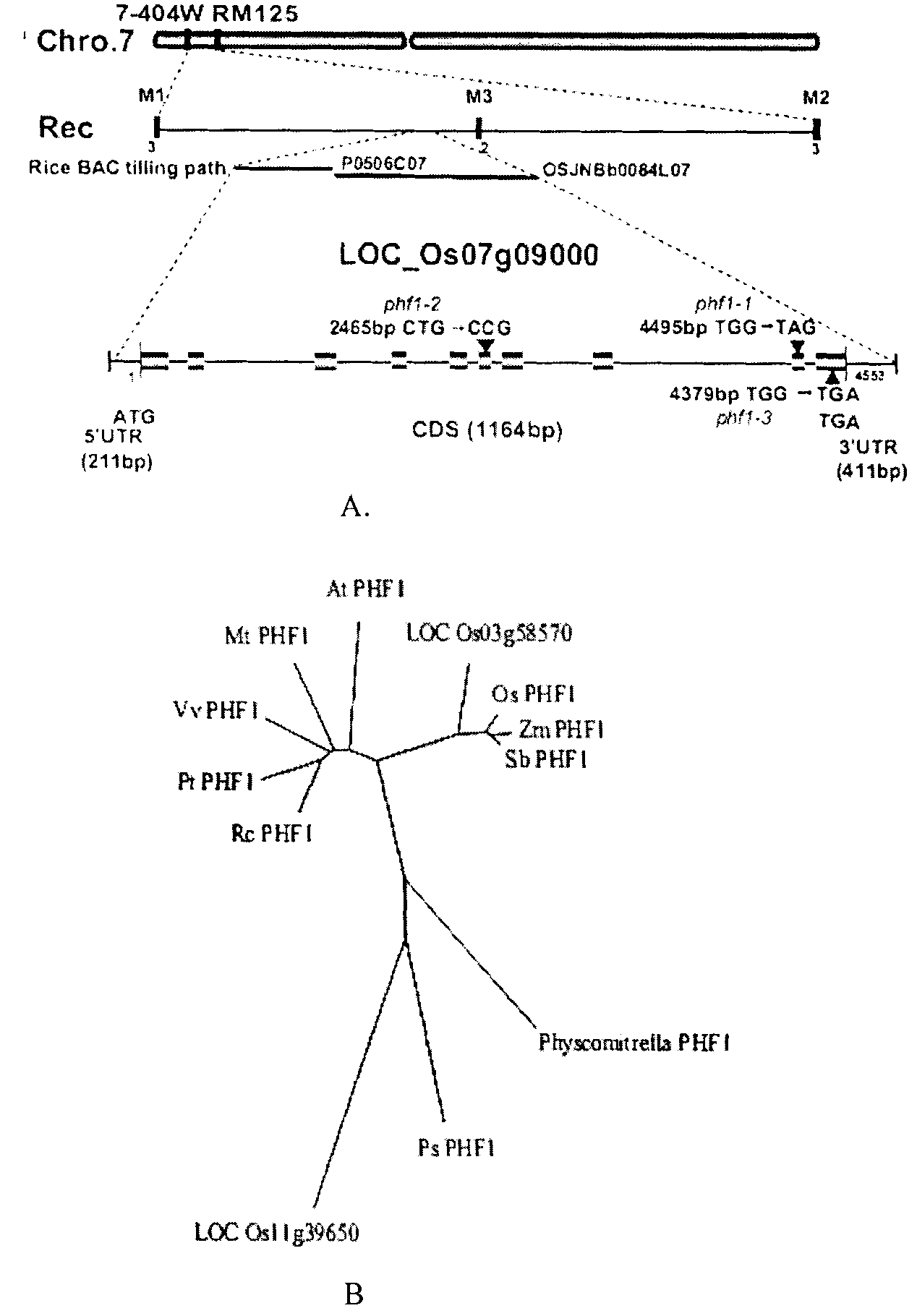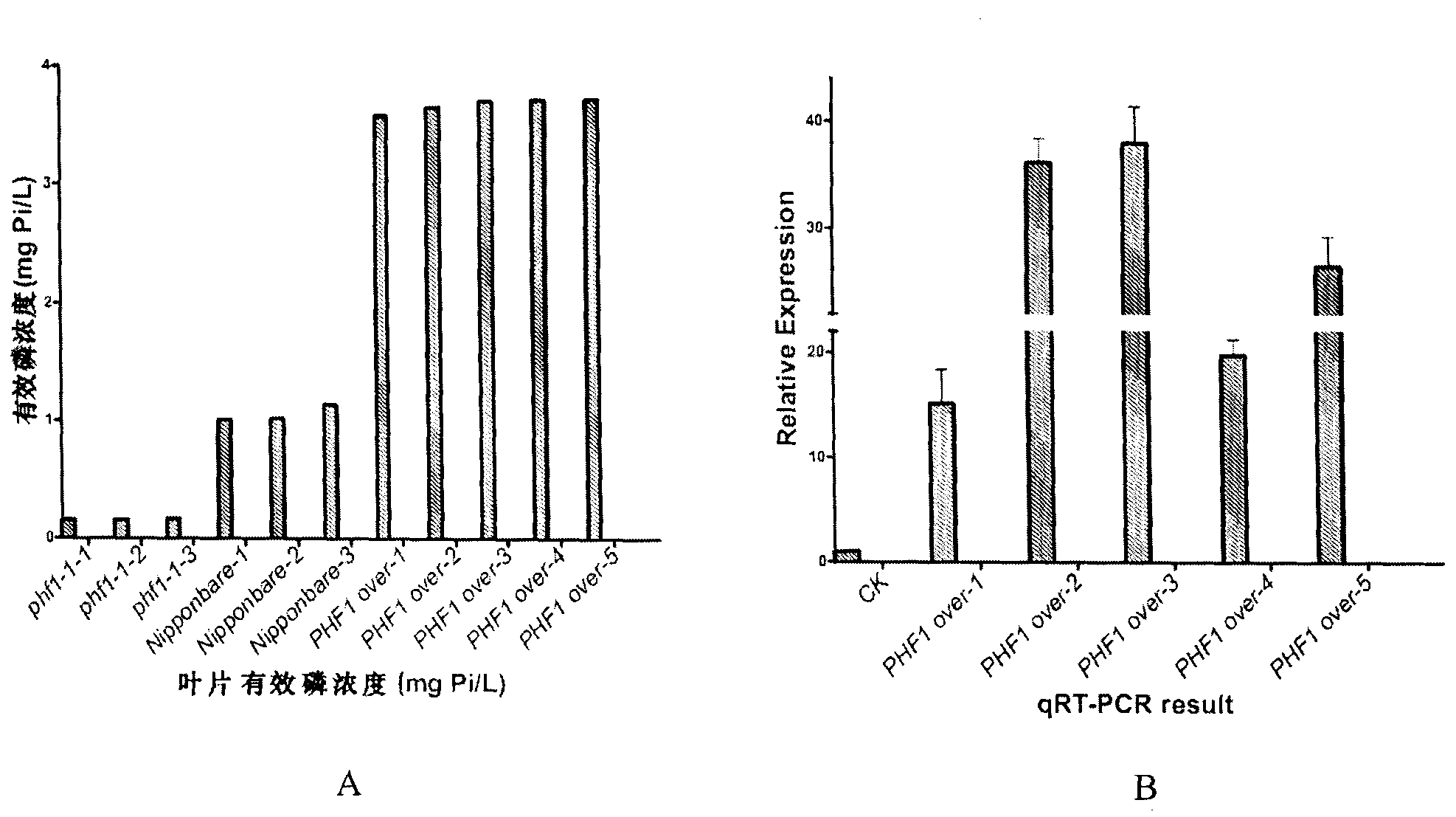Rice phosphorus absorption and transfer regulator gene OsPHF1 and application thereof
A technology for regulating genes and phosphorus absorption, which is used in applications, genetic engineering, plant genetic improvement, etc.
- Summary
- Abstract
- Description
- Claims
- Application Information
AI Technical Summary
Problems solved by technology
Method used
Image
Examples
Embodiment 1
[0053] Embodiment 1, screening and phenotype of mutants
[0054] A large number of single-copy homozygous strains of OsPHR2 overexpression material (Oryza sativa Nipponbare, which can be purchased from Zhejiang University) were propagated, soaked in EMS (ethyl methanesulfonate) with a concentration of 1% (volume concentration) at room temperature for 12 hours Afterwards, a large number of species were propagated in Hainan. The seeds (M2) after two generations of mutant selfing were built into a mutant library and used as mutant screening objects. m 2 The seeds were rinsed with distilled water and washed with 0.6% (volume concentration) dilute HNO 3 Dormancy-breaking treatment for 16 hours, germination in the dark at 37°C until white. Sow the dew-white seeds on the nylon gauze floating on the rice culture solution with a sodium arsenate concentration of 50 μM (the formula of the culture solution is the standard formula of the International Rice Institute), at a temperature o...
Embodiment 2
[0056] Embodiment 2, gene localization
[0057] f 2 The mapping population was obtained by crossing the homozygous (Osphf1-1) with the indica rice Kasalath, and a total of 28 F 2 Individual, available phosphorus (phosphate) was measured according to a known method (Nanamori et al., 2004). Genomic DNA for gene localization was extracted from rice leaves by a rapid extraction method of rice trace DNA. Take about 0.1 g of young rice leaves, freeze them with liquid nitrogen, grind the leaves into powder in a 1.5 ml centrifuge tube, extract the total DNA, and dissolve the obtained DNA in 200 μl sterile water. 2 μl of DNA sample was used for each SSR and STS reaction.
[0058] In the preliminary mapping experiment of OsPHF1 gene, 28 F 2 Individuals were subjected to SSR analysis. According to the published molecular genetic maps created by japonica and indica rice, select SSR primers that are approximately evenly distributed on each chromosome, and SSR markers are derived from ...
Embodiment 3
[0100] Example 3, gene prediction and sequence analysis
[0101] According to the results of fine mapping, the OsPHF1 gene is located within 70kb of the STS07g479 marker at the junction of BAC clone P0506C07 and OSJNBb0084L07 ( figure 2 A). According to the rice gene annotation information of TIGR (http: / / www.tigr.org / tdb / e2k1 / osal / ) and the EST database (http: / / www.ncbi.nlm.nih.gov / ), the mapped chromosomal regions In-segment gene prediction analysis, there is a gene near this marker, and the protein encoded by it with WD40 domain is homologous to AtPHF1 in Arabidopsis, so this gene is named OsPHF1, and the cDNA sequence of OsPHF1 gene is SEQ ID NO: the cDNA sequence shown in 1. The amino acid sequence encoded by the cDNA sequence of the OsPHF1 gene is the amino acid sequence shown in SEQ ID NO:2. According to the rice genome sequence information submitted by NCBI (http: / / www.ncbi.nlm.nih.gov / ), the upstream sequence of the OsPHF1 gene on the chromosome is the promoter se...
PUM
 Login to View More
Login to View More Abstract
Description
Claims
Application Information
 Login to View More
Login to View More - R&D
- Intellectual Property
- Life Sciences
- Materials
- Tech Scout
- Unparalleled Data Quality
- Higher Quality Content
- 60% Fewer Hallucinations
Browse by: Latest US Patents, China's latest patents, Technical Efficacy Thesaurus, Application Domain, Technology Topic, Popular Technical Reports.
© 2025 PatSnap. All rights reserved.Legal|Privacy policy|Modern Slavery Act Transparency Statement|Sitemap|About US| Contact US: help@patsnap.com



